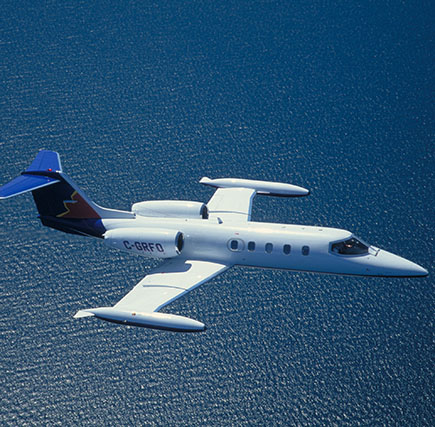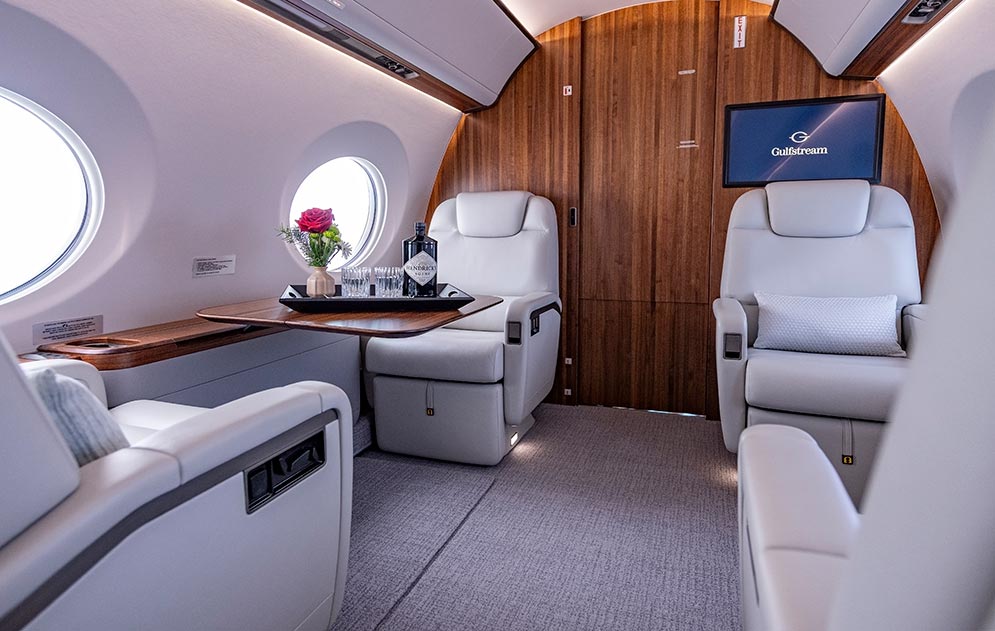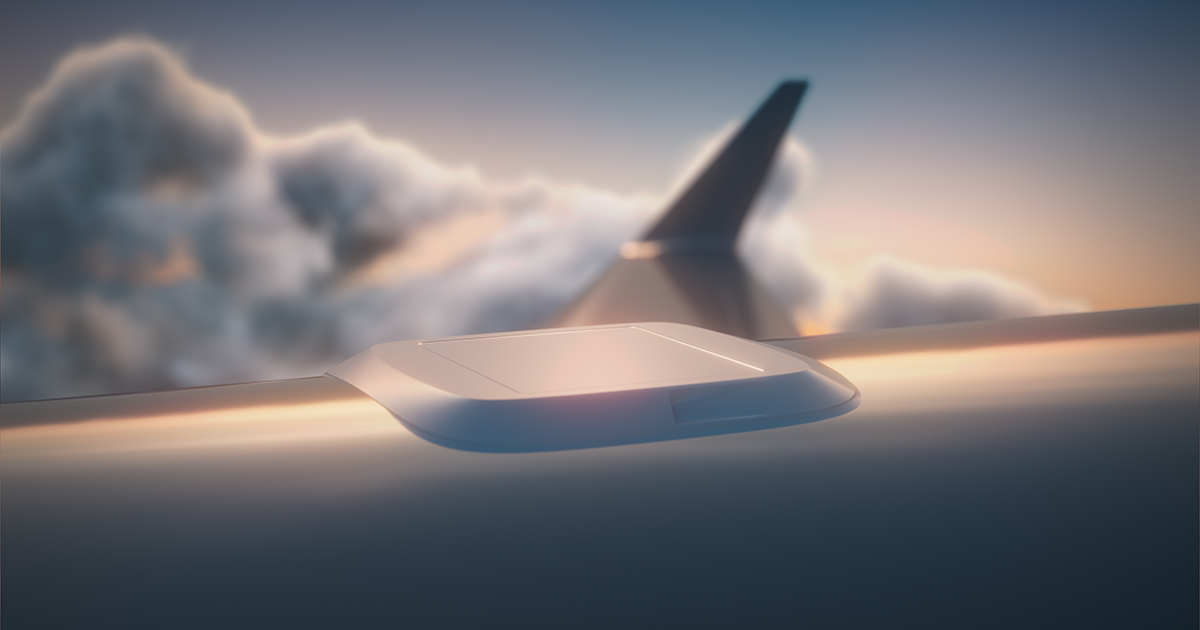
Bombardier Learjet 40
By Clay Lacy in 2005 Professional Pilot Magazine “Flight Check”
ATP/CFII/Helo/Sea. Gulfstream II/III/IV,
Learjet and Citation Series
HS125, Boeing 747, DC3,
and 25 misc type ratings
BOMBARDIER LEARJET 40: $7.8MIL, 6-7 SEATS, M.81, 1824 NM, FL510
Honeywell Primus 1000 avionics suite, 4-display EFIS, EICAS, RVSM ready, EGPWS, Honeywell TFE31-20-AR turbofans with 3500 lbs of thrust a peice.
Bombardier’s Learjet 40, designed to address the shortcomings of the earlier model Learjet 31A and priced more than $2 million less than the popular Learjet 45, is sure to provide many operators with exactly what they are looking for. FAA certified in Jul 2003, with first customer deliveries in Jan 2004, the Learjet 40 is 24.5 inches shorter than the 45 and carries 687 lb less fuel. While you only get 6 seats (plus a belted lav), rather than the 45’s double-club configuration, and the 1824 nm IFR range is 200 nm short of the 45’s, the 40 offers the largest cabin and best performance of any jet in the evolving light business jet segment.
In late Oct 2004 I flew to ICT (Mid-Continent, Wichita KS) for Bombardier’s Safety Standdown as well as the Learjet 40 flightcheck. I was looking forward to flying with Bombardier Demo Pilot Owen Zahnle, who was first typed in Learjets back in 1978 and has been on the 45 series program since the beginning. Also on my agenda today was to meet up with Program Mgr Learjet Aircraft Larry Thimmesch, Mgr Product Planning Learjets Brad Nolen, Dir Customer Support Engineering Steve Crawford, Sales Engineer Mark Ingalls and Dir Flight Ops Bob Agostino.
We sat down in a conference room at the Learjet service center for what I have to say was the most thorough aircraft product briefing I’ve experienced in over 8 years of doing Pro Pilot flightchecks. Everyone was prepared and I knew Media Mgr Leo Knaapen would have all my questions about the 40 program answered by experts in their respective fields.
ROUNDTABLE DISCUSSION
Nolen explained that Bombardier positioned the Learjet 40 to meet evolving market requirements beyond what the Learjet 31A had offered. Improvements over the 31A include a spacious externally serviceable lav, large externally accessible baggage space, a larger cabin with full galley, state-of-the-art flightdeck, integrated electronic maintenance diagnostics and improved DOCs.
Compared with the 31A, the model 40 has 3350 lb additional MTOW (at 20,350 lb), 1251 lb additional fuel capacity (5375 lb) and 383 nm more range (1824 nm with 4 passengers, 2 crew and IFR reserves). This new model has traditional Learjet performance with a FL510 ceiling, Mach .81 max cruise speed and direct-climb ability to FL450.
Now, I would have liked to see the model 40 have more range. But, as Nolen says, the need for product differentiation requires that the 40 fill a different market segment than the next size-up Learjet 45. If Bombardier had not reduced fuel capacity by 687 lb, thereby dropping range by about 200 nm, the 40 would compete too closely with the $10.3-million Learjet 45.
Nolen is quick to point out that, although the Learjet 40 has less range than its bigger brother, the Learjet 45, the model 40 has by far the best payload range capability in the light jet segment. With 6 passengers, the Learjet 40 flies more than 100 nm further than Cessna’s Citation Encore—and, with a 7th passenger belted in the lavatory, the 40 flies almost 185 nm further than the Encore.
Thimmesch feels that the Learjet 40 competes with the Raytheon Hawker 400XP, the Citation Bravo and, most particularly, the Citation Encore. He says the Learjet 40 flies higher and faster than the Encore and will save you 20–25 minutes on a 3-hour trip. Compared with the Encore, the 40 has 120 cu ft more cabin volume, and it has 59 inches of flat floor headroom versus the Encore’s 55 inches of dropped aisle headroom.
Bombardier is also offering a 40XR version—scheduled for FAA certification in the 4th quarter of 2005—with a 650-lb higher MTOW and TFE731-20BR engines rather than the model 40’s 20BARs. While the range of both models with 4 passengers is the same, you’d probably want to pay the $400,000 premium for the XR if you routinely operate out of high or hot fields. XR upgrades will be available to model 40 owners as a retrofit later this year, as the upgrade can coincide with regular maintenance.
Bombardier has delivered 18 Learjet 40s so far and has established a good track record on the model 45 with about 255 units now in service worldwide. Nolen pointed out some of the new and improvedfeatures of the model 40 cabin. These include 10,000-hour rated LED cabin lighting, seats 2 inches wider than those in the original model 45, more leg room and more galley storage space than its larger cousin.
Crawford explained that Bombardier will tailor a high or low-hour maintenance program to an operator’s particular needs. While the regular maintenance program is designed for a 450-hr/year operation, if you fly less or more you can get on a program that may save you annual maintenance costs and help minimize your downtime.
PREFLIGHT
Our flight test aircraft had a 3-spar 13.4° sweep at 25% chord wing and traditional dual wheel trailing link main gear, like the model 45. Zahnle pointed out the single point refueling port. A feature I liked was a gravity fuel receptacle higher up on the aft fuselage with which you can fill all tanks in the event that an airport does not have pressure refueling available.
External baggage space, at 50 cu ft and 500-lb capacity, is generous. A 30-inch clamshell entry door is traditional Learjet and a design I’ve always liked. I spent some time in the cabin before heading up front and found both head and shoulder room to be most adequate. Agostino suggested that I check out the lav and I found this area to be surprisingly spacious—maybe one of the best seats in the house.
I found the flightdeck very roomy. In fact, I had the feeling I was in a much bigger aircraft. Everything was well laid out and easy to get to. Also, pilot seats were sufficiently adjustable.
Start-up was straightforward and, on taxi out to ICT’s Runway 19R, I had the opportunity to check steering and brakes. Steering, which works on rudder pedals, is very smooth and at slow speeds you’ve got up to 65° turning authority. The model 40’s brake-by-wire system also worked very nicely, with lots of stopping power. Carbon brakes are guaranteed for 1000 landings.
We taxied to position on Rwy 19R, at our weight of 18,000 lb (88% of MTOW), with 3790 lb of fuel and 2 passengers. In ISA +9 conditions, balanced field length was 3760 ft with V1, Vr and V2 of 107, 112 and 121 kts, respectively.
FLYING THE LEARJET 40
Acceleration down the runway was nice—traditional Learjet—and I flew 2 low passes over the field for photo purposes before picking up an IFR clearance to FL410. Using a climb profile of 250 kts to Mach 0.73, Zahnle and I arrived at FL410 in just 24 minutes, which included our 2 flybys and a 1-minute level off at FL360. I estimated our net time-to-climb as 18 minutes—right on the book figure.
At FL410 I was able to confirm fuel flows of 580 lb per side at Mach 0.76—slightly better than book. As the air was a little bumpy, we descended to FL370 for smoother air, to check fuel flows again and to do some steep turns. Flying Mach 0.76 at FL370 we were burning 615 lb per side—about 3 lb per side better than book. In steep turns I noted a very high margin— over 100 kts—between high and low speed buffet.
Zahnle and I then did a modified emergency descent, from FL350 to FL240 with full spoilers out. We were coming down well, pegged at 10,000 fpm. When you deploy spoilers on the 40 there’s a slight pitch-up, but this is the right direction as it helps you avoid dive and overspeed.
At 16,500 ft I did slow speed work and approaches to stalls. With full flaps and landing gear down, shaker came on at 106 kts. I held the wheel back all the way past pusher, at 98 kts, where I noted a slight right wing drop. Stall recovery was easy, and Zahnle told me that you still have 40% of roll control left in a full aft stick stall. In approach to stall, clean, shaker came on at 119 kts. I added power to fly right out without waiting for pusher.
We then simulated aileron control jam. As Zahnle held the wheel I disconnected ailerons to use spoilers for roll control. When flying with spoilers, roll control is a little touchy, as the fly-by-wire (FBW) system offers no feedback and you have to be aware that there’s a fairly high rate of roll. Next, at 230 kts, I turned yaw damper off and tried to induce yaw. But as soon as you stop, the model 40 flies as straight as an arrow. It’s obvious why this aircraft is licensed with just 1 yaw damper and why it can be dispatched without yaw damper operative and with no altitude or speed limitations.
Returning to the pattern at ICT, I did 2 touch-and-goes at a Vref of 115 kts. Even through conditions on the ground were gusty—26 to 30 kts with a 30° crosswind component—I did not feel I had to add any more to Vref. Flying the circuit, I found throttle response excellent. If you do get a little slow you can get your speed back immediately.
For my 3rd touch-and-go, Zahnle simulated an engine failure by pulling the right engine just after takeoff. Rudder boost comes through the yaw damper servo and really keeps the ball centered. The aircraft accelerated with ease to 130 kts and 1500 fpm. I brought the 2nd engine back up and came around for a full-stop approach at Vref of 114 kts at our weight of 16,350 lb.
I had an added incentive to land short as Agostino had bet $5 that I’d make the first turn off on 19R— 2000 ft from the approach end of the runway. I made the turn easily, landing with no reversers and without full brakes. But, as Zahnle pointed out, you can land the model 40 standing on the brakes and land extremely short.
Taxiing back to Learjet after our 1.5-hour flight, which burned 1650 lb of fuel, I took the opportunity to do a couple of 360s to get a better feeling for the steering. The 40 really turns well and is as maneuverable on the ground as any aircraft I’ve ever operated.
One thing I did not like about this airplane was the space between the rudder pedals and the floorboards. I was afraid my heels could get caught and I’d like to see the pedals moved a little bit higher.
SYSTEMS
Standard avionics package for the Learjet 40 includes a Honeywell Primus 1000 integrated system with four 8 x 7-in EFIS screens which also display engine instrument and crew alerting systems (EICAS) information. Also included is a Honeywell Primus 660 weather radar, TCAS2000, EGPWS with windshear alert, duel Primus II nav/com systems and a Universal Avionics UNS1E FMS.
The 2 Honeywell TFE731-20-AR engines are flat-rated to 3500 lb of thrust, with an automatic power reserve (APR) providing an additional 150 lb of thrust on takeoff. Full takeoff power is available up to 88°F on the model 40 and to 104° F on the 40XR. Electrically- controlled and hydraulically-operated Nordam target-type thrust reversers are standard equipment. No APU is available on the Learjet 40, but a 2-zone Freon air conditioning system is available.
Flight controls are mechanically operated. Nosewheel steering is electronically controlled by rudder pedals and brake-by-wire through normal braking on pedals. Single slotted flaps are electrically controlled and hydraulically/mechanically actuated with flap position selectable. Variable-position spoilers are electrically controlled and hydraulically actuated.
An independent fuel system is provided in each wing for its respective engine. There is also a fuselage tank that transfers by gravity to main wing tanks. A 3000-psi hydraulic system, using 2 engine- driven pumps and an electrically driven pump, operates the landing gear, main gear inboard doors, brakes, flaps, thrust reversers and spoilers. The 9.4-psi pressurization system provides a sea-level cabin to 25,700 ft and a maximum 8000-ft cabin at FL510. Engine bleed air is used to anti-ice the wing, horizontal stabilizer leading edges and nacelle inlets. Windshields and pitot static masts are anti-iced electrically.
The Learjet 40 is a mostly DC- powered aircraft with two 300-amp engine-driven starter/generators. Two 24-volt Nicad (or lead acid) batteries provide DC power for engine starting and emergency bus operations. AC inverters provide 110-volt AC power to cabin outlets.
Purchase price includes training for 2 pilots and 2 mechanics and a 1-year subscription to MedLink for 3 people. A Honeywell Maintenance Service Plan (MSP) is available for $96.74 per hour per engine and Smartparts Plus is available for 5 years at $66.00 per hour for parts and consumables.
Bombardier owns and operates 6 factory service centers in the US and 1 in Europe in addition to a network of 19 Learjet authorized service facilities (ASFs) worldwide. Warranty on the model 40 is 10 years/10,000 hours on primary structure, 5 years/5000 hours on other equipment, 5 years/3000 hours on engines, 5 years on avionics and 2 years/2000 hours on paint and interior.
SUMMARY
For an operator with $8 million to spend, who doesn’t require nonstop coast-to-coast capability, the Learjet 40 is a great airplane. If you don’t need the 2 extra seats that the model 45 offers, this is a great opportunity to save over $2 million and get basically the same airplane.
The cabin is the largest you’ll find in the light jet class, and a really nice thing about this aircraft is that it has a small enough footprint that you’ll easily find a place to park at some of the smaller 4000 ft fields. Once you get into a supermidsize or large business jet this is not always the case.
There’s a fair amount of choice these days in the light jet sector of the market, and the offerings are definitely getting better than they were just a few years ago. The model 40 is a much more passenger and pilot friendly product than the Learjet 31A was—it’s considerably more spacious and light years ahead in terms of integrated systems.
A major reason for this is the exceptional pedigree of the Learjet 40, which, being certified under the type certificate of the Learjet 45, stands alone in its class regarding certification standard. Examples of the demanding standards that the model 40 meets are its 16 G dynamic seat certification, more stringent ice testing requirements and fault tolerant designs that meet higher reliability criteria.
If you are considering an aircraft in the light jet market, the model 40 is one you must consider, since cabin space, speed, climb, altitude capability and price put this aircraft near the top of the list.
Clay Lacy, founder of Clay Lacy Aviation at VNY (Van Nuys CA), is a highly experienced pilot who has been performing flightchecks and writing other articles for Professional Pilot since May 1997.


